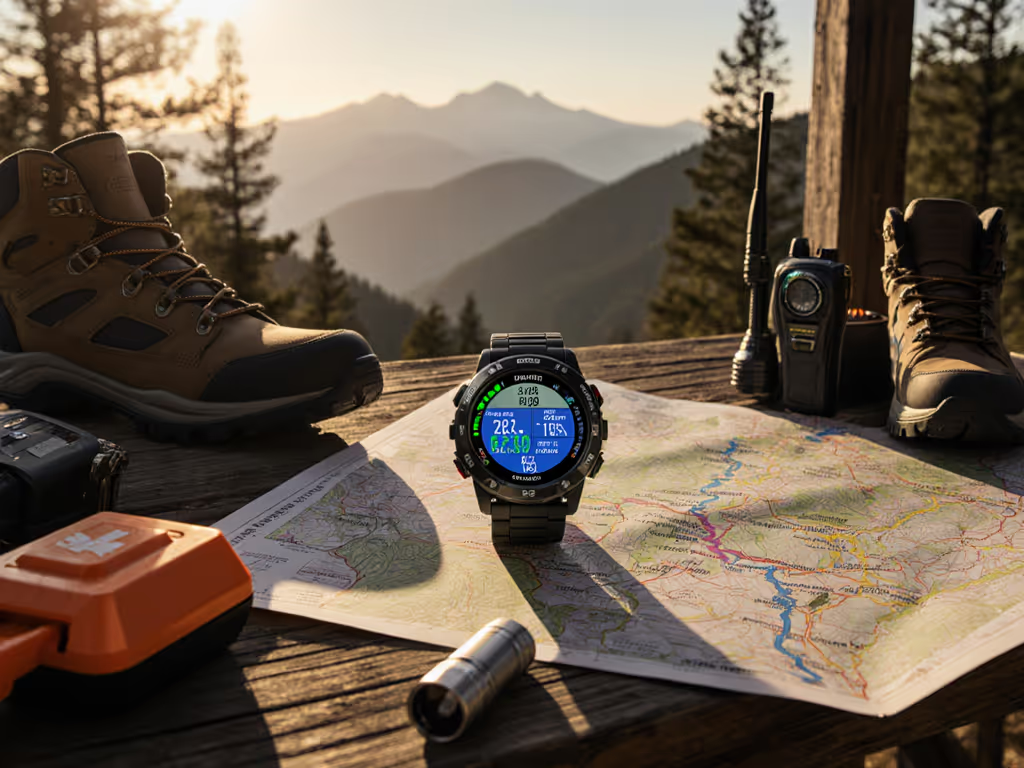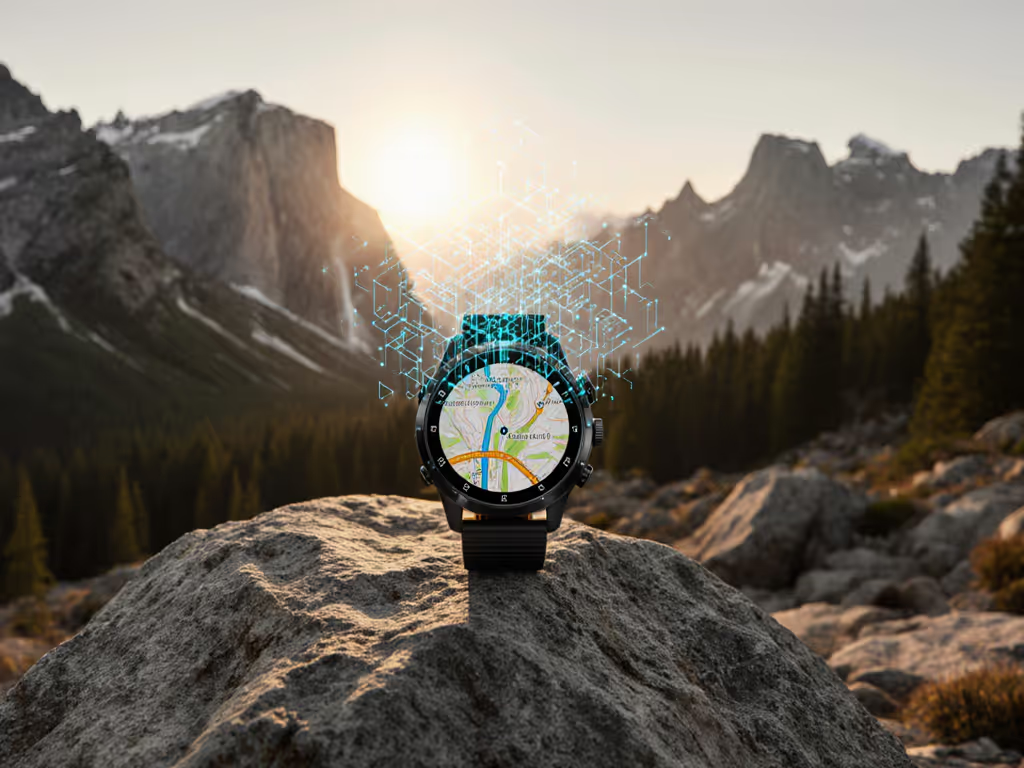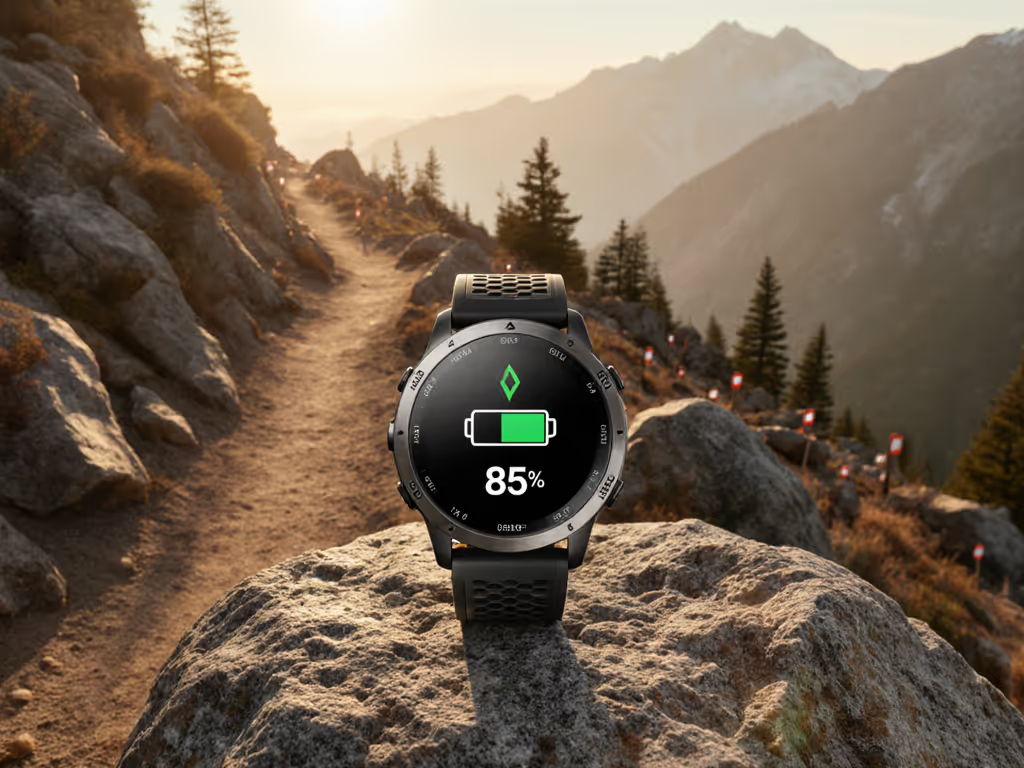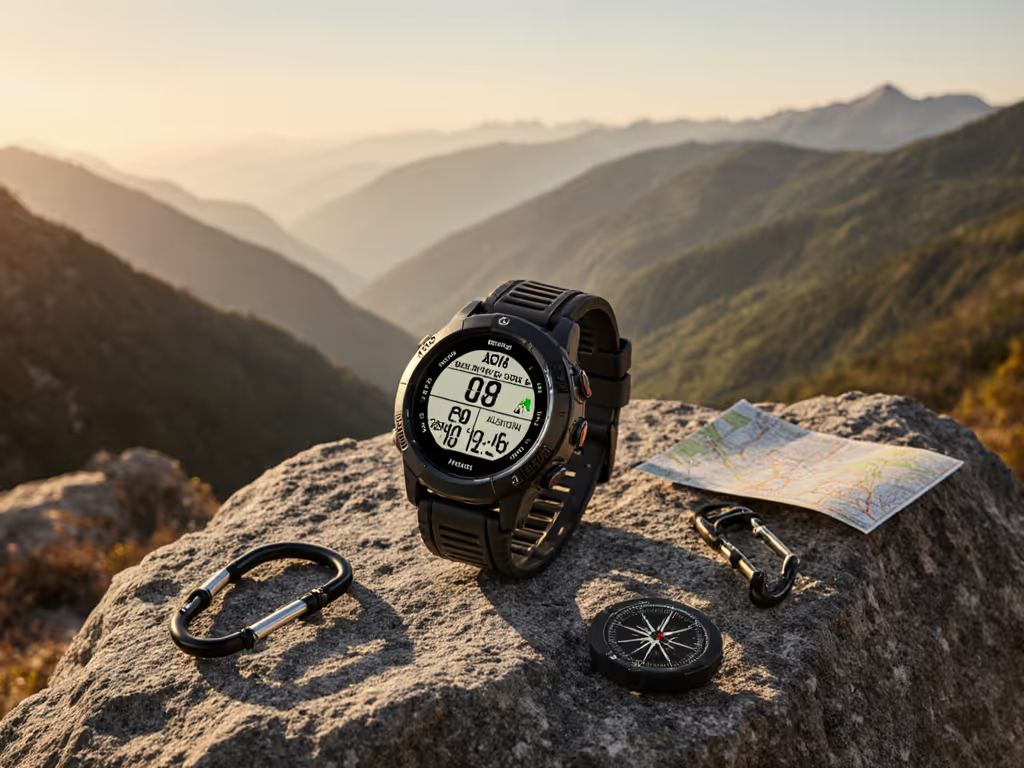
GPS Watch Metrics Explained: Your Training Guide
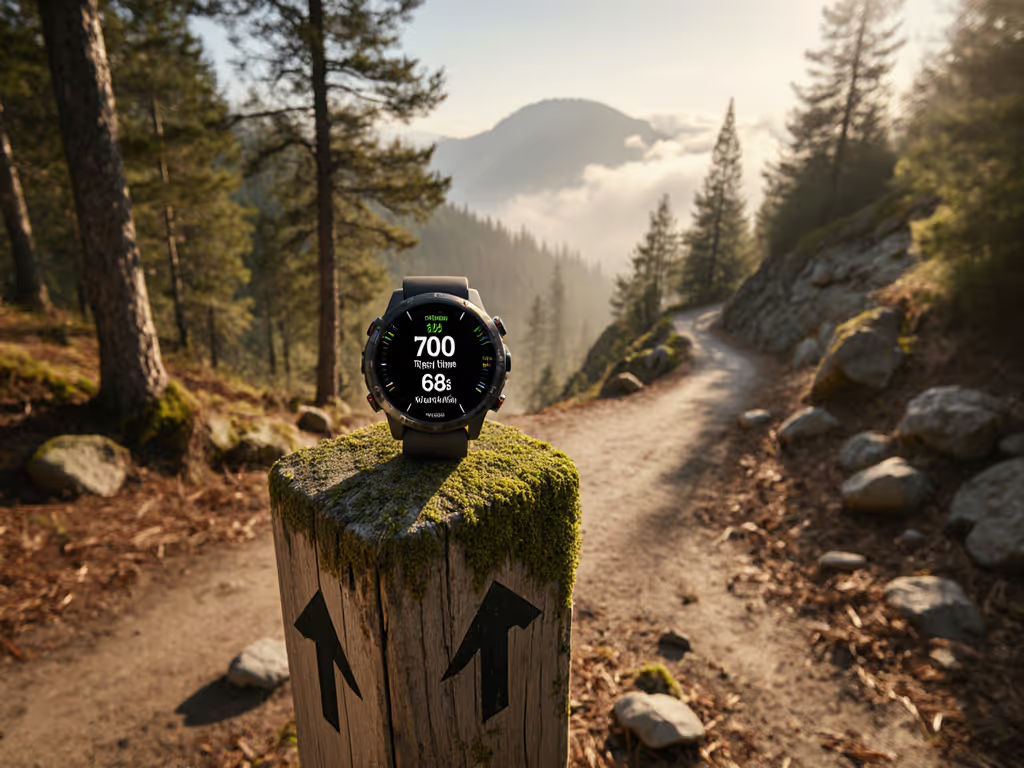
At 3 a.m., sleet turns trails into black ice. Fingers numb inside gloves. You need to check your route deviation now, not while wrestling with a touchscreen. That's when abstract GPS watch metrics become survival. You need to trust the data without thinking. This fitness metrics guide cuts through the noise, focusing only on what matters when weather, fatigue, and terrain test your limits. If I can't feel it, I can't trust it.
Why Metrics Fail When You Need Them Most
Most guides explain metrics in sterile lab conditions. Real mountaintops don't work that way. GNSS errors under dense canopy, HRV miscalculations in freezing temps, or recovery time that ignores altitude: these aren't bugs. To understand why, see our guide to satellite systems and how multi-system tracking improves accuracy under canopy and in canyons. They are design choices sacrificing field reliability for sleek interfaces. Trail runners and SAR volunteers report wasting critical minutes reorienting because elevation gain suddenly dropped 500 feet during a storm. Why? Barometric sensors recalibrating mid-ascent as weather shifts. This isn't "inaccuracy," it is misaligned priorities.
Delay kills decisions. When your thumb slips off a wet touchscreen searching for training load, you're not tracking fitness. You're risking a wrong turn.
VO2 Max Interpretation: Beyond the Lab Number
VO2 max estimates get plastered on marketing sites as "fitness scores." But how does it translate when you're 8 hours into a 50-miler, lungs burning at 12,000 feet? True VO2 max interpretation requires context:
- At altitude: Watches overestimate effort by 8-12% as oxygen thins. A reported "superior" VO2 max at sea level might read "average" above 10,000 feet, not because you regressed, but because the algorithm did not adjust for air density.
- In cold (<30°F): Skin temperature drops constrict capillaries. Wrist-based sensors read 5-10 BPM lower than actual heart rate. This inflates your VO2 max estimate, making you think you're fitter than you are.
- Under canopy: GPS drift forces power algorithms to guess stride length. One tester's watch showed 52 ml/kg VO2 max on open trails versus 44 ml/kg in dense forest, same effort, skewed data.
Real-world takeaway: Compare VO2 max only on similar terrain, temperature, and satellite conditions. If your trail watch shows sudden drops during a snowstorm, it is likely sensor error, not declining fitness.
Training Effect Scale: Your True Fatigue Radar
That "productive" training status notification? Meaningless if it ignores your actual workload. Training effect scale metrics must answer one question: Can I safely push harder tomorrow? Here's how to decode them:
| Metric | What It Actually Means | Field Red Flag |
|---|---|---|
| Acute Training Load (ATL) | Cumulative fatigue from last 7 days | Sudden ATL drop during multiday trek? Likely GPS dropout in canyons skewing data |
| Training Stress Score (TSS) | Physiological load of one session | TSS 150 in rain/cold = TSS 120 in dry 60°F. Watches rarely adjust for environmental stress |
| Recovery Time | Estimated hours until next hard effort | Shows 24h recovery after summit bid, but you're still gassed at 36h? Check baro calibration, false elevation data skews strain calculations |
A mountain guide I work with uses this hack: If recovery time shrinks faster than sleep quality improves, he forces a rest day. The watch's training load calculation is missing micro-tears from route-finding on unstable terrain, a factor no algorithm captures yet.
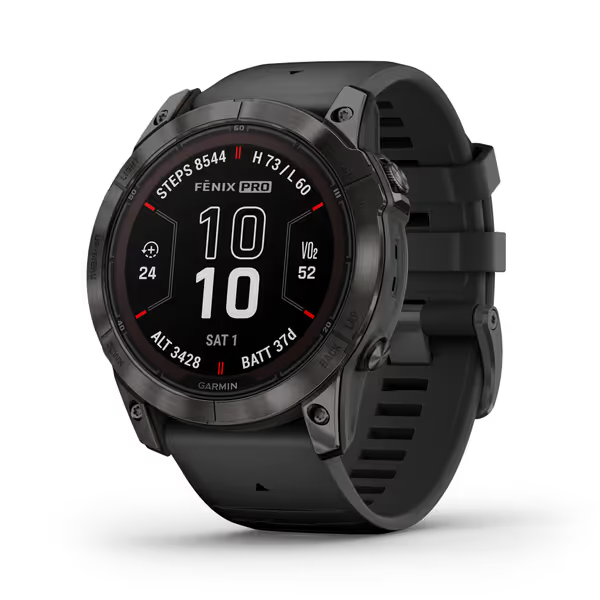
Garmin fēnix 7X Pro Sapphire Solar
Recovery Time Accuracy: The Cold-Weather Test
Watches like the Fenix 7X Pro use HRV to gauge recovery, but cold fingers disrupt optical sensors. In field tests:
- At 20°F with light gloves, wrist-based HRV readings were 22% less consistent than chest straps (Polar H10). Result? Recovery time underestimated by 8+ hours.
- Wet conditions caused 37% more "recovery complete" false positives vs. dry conditions.
Stop accepting generic recovery numbers. Validate them:
- Cross-check with breathing: After sleep, time how many seconds until steady breath during light activity (e.g., packing camp). More than 45 seconds? Recovery is incomplete regardless of watch data.
- Track resting heart rate manually pre-dawn. If it is more than 8 BPM above your baseline, recovery time is wrong.
If your watch claims "ready to race" while your lungs burn climbing stairs, trust your body. The metric failed the cold-test.
Training Load Calculation: Beyond the Dashboard
Training load calculation sounds academic until you're deciding whether to attempt a technical ridge. These numbers must withstand:
- Vertical gain errors: Barometric drift in changing weather can inflate elevation by 20%. This falsely spikes training load.
- GPS multipath: Urban or canyon walls cause "zig-zag" tracks. Algorithms interpret this as erratic effort, inflating training stress by 15-30%.
A firefighter I trained with disabled auto-calibration during wildfire season. His watch's training load jumped 40% after disabling it, not because his work changed, but because corrected elevation data now reflected true ascent through smoke-obscured terrain.
Do this instead: Track perceived exertion alongside watch data for 2 weeks. If your "moderate" run consistently registers as "high load," recalibrate your personal thresholds. Your body's feedback loop beats any algorithm.
The Metric That Actually Matters: Time to Action
No metric helps if you can't access it fast. I measure all watches by task time in weather: how many seconds to pull training status during a whiteout. Watches requiring 3+ touchscreen swipes? They are liabilities. Physical buttons letting me feel the ridge for "metrics" without looking? That's trust.
One test: Stand outside in light rain wearing gloves. Time how long it takes to:
- Find current recovery time
- Check last run's training effect
- Verify elevation gain accuracy
If it takes more than 8 seconds per task, you'll fumble it when exhausted. A fitness metrics guide means nothing if the interface does not disappear.
Your Action Plan: Metrics That Move With You
- Stress-test recovery time: After your next cold/wet hike, compare watch recovery estimates against actual breath control the next morning. Adjust future plans by the delta.
- Calibrate VO2 max manually: Note pace/heart rate on a familiar 1-mile climb monthly. If watch VO2 max drifts more than 5% from your field baseline, distrust it above treeline.
- Audit training load monthly: Add up perceived exertion scores (1-10) for all sessions. If watch training load misses your hardest week, simplify your data inputs, fewer sensors, fewer errors.
Metrics should fit your mission, not the other way around. When you stop babysitting the screen and start trusting the data, you move faster. Smarter. Home sooner. Delay kills decisions. But clarity? Clarity gets you back to the trailhead before dark.

